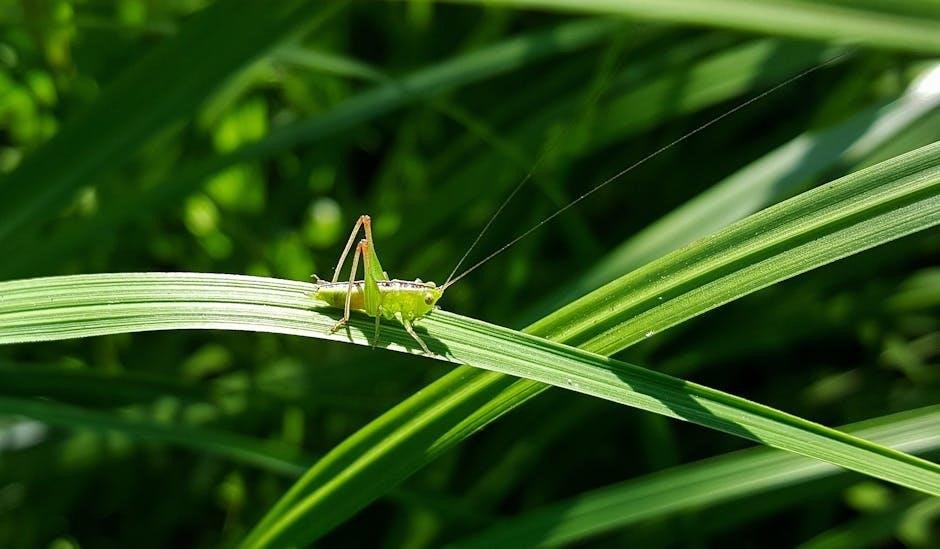Texas is home to a diverse range of snake species, both venomous and non-venomous, playing crucial roles in the ecosystem. Understanding their biology and significance is essential for coexistence and conservation efforts.
1.1 Overview of Snake Diversity in Texas
Texas boasts an extraordinary diversity of snake species, with over 115 species documented across its vast and varied landscapes. This abundance is due to the state’s unique geography, which encompasses deserts, forests, wetlands, and grasslands. Venomous species like coral snakes, copperheads, cottonmouths, and rattlesnakes are prominent, each adapted to specific habitats; Non-venomous snakes, such as plain-bellied watersnakes, gopher snakes, king snakes, and bullsnakes, also thrive, showcasing a wide range of ecological roles. Many of these species are highly specialized, with unique characteristics like the coral snake’s distinctive bands or the bullsnake’s impressive size. This diversity highlights the complexity of Texas’s ecosystems and the adaptability of its snake populations. Understanding this variety is crucial for appreciation, conservation, and safe coexistence with these fascinating creatures.
1.2 Importance of Snakes in the Ecosystem
Snakes play a vital role in maintaining the balance of Texas’s ecosystems. As both predators and prey, they regulate populations of small mammals, birds, and other wildlife, preventing any single species from dominating and causing ecological disruption. Venomous snakes, such as rattlesnakes and copperheads, control rodent populations, which helps protect crops and reduce the spread of diseases. Non-venomous species, like king snakes and bullsnakes, prey on other snakes, including venomous ones, further stabilizing the food chain. Additionally, snakes contribute to nutrient cycling by transporting energy between different habitats. Their presence also supports biodiversity by occupying unique ecological niches, from underground burrows to tree canopies. Without snakes, ecosystems would face significant challenges, highlighting their indispensable role in preserving Texas’s natural landscapes and ensuring the health of its wildlife. Their importance underscores the need for conservation and appreciation of these often misunderstood creatures.
Venomous Snakes in Texas
Texas hosts four main venomous snake species: coral snakes, copperheads, cottonmouths, and rattlesnakes. These snakes have adapted to diverse habitats, from wetlands to deserts, and play a role in controlling prey populations while posing risks to humans.
2.1 Coral Snakes: Identification and Habitat
Coral snakes are easily identified by their distinctive red, yellow, and black banding pattern, which completely encircles their bodies. They are relatively slender and typically grow up to 30 inches in length. Coral snakes are primarily found in the southern and eastern regions of Texas, preferring habitats such as pine forests, scrublands, and sandy areas. They are secretive and often hide underground or in leaf litter, making them less commonly encountered than other venomous snakes. Coral snakes are nocturnal and feed on small mammals, birds, and lizards. Their venom is highly toxic, containing powerful neurotoxins that can cause respiratory failure. Despite their dangerous reputation, coral snakes are generally not aggressive and tend to avoid confrontations with humans. Understanding their habits and habitats can help reduce the risk of encounters.
2.2 Copperheads: Behavior and Venom Characteristics
Copperheads are one of the most common venomous snakes in Texas, found in a variety of habitats, including rocky areas, woodpiles, and near water sources. They are ambush predators, often lying still and relying on their mottled brown and tan coloration to blend into their surroundings. Copperheads are generally nocturnal during the summer months but can be active during the day in cooler weather. Their venom is a hemotoxin, which damages blood vessels and tissue, leading to pain, swelling, and bruising at the bite site. Bites are typically not fatal to humans but can cause significant discomfort. Copperheads are responsible for a large number of snakebites in Texas due to their widespread distribution and tendency to remain still when encountered, increasing the likelihood of accidental contact. Understanding their behavior and habitats can help minimize the risk of encounters.
2.3 Cottonmouths (Water Moccasins): Habitat and Distinguishing Features
Cottonmouths, also known as water moccasins, are highly venomous snakes predominantly found in aquatic environments across Texas; They thrive in swamps, marshes, lakes, and slow-moving streams, where they ambush prey such as fish, frogs, and small mammals. Distinguishing features include their dark, olive-green to black coloration, with a distinctive white color on the inside of their mouths, which they often display when threatened. Adults typically grow up to 4 feet in length, with a stout, heavy build and a broad, flat head. Their eyes are a striking feature, with vertical pupils that aid in hunting. Cottonmouths are pit vipers, and their venom is a powerful hemotoxin that can cause severe tissue damage. They are generally aggressive when provoked, making them a significant concern for humans in their habitats. Their ability to swim efficiently allows them to dominate their aquatic ecosystems, playing a key role in controlling prey populations. Recognizing their habitat preferences and physical characteristics is crucial for avoiding encounters.
2.4 Rattlesnakes: Species Overview and Safety Tips
Rattlesnakes are among the most recognizable venomous snakes in Texas, with several species inhabiting the state. The Western Diamondback Rattlesnake is the largest and most venomous, found in western and central regions. The Mojave Rattlesnake, Timber Rattlesnake, and Eastern Diamondback Rattlesnake also inhabit specific areas. These snakes are known for their distinctive rattle, used as a warning signal. Rattlesnakes thrive in diverse habitats, including deserts, forests, and rocky terrains. When encountering a rattlesnake, it’s crucial to maintain a safe distance and avoid sudden movements. Safety tips include wearing long pants, boots, and staying on marked trails when hiking. Using a flashlight at night can help spot them in low-light conditions. Never attempt to handle or provoke a rattlesnake, as this increases the risk of a bite. If a rattlesnake is found in a populated area, contact a professional for removal. Understanding their behavior and habitats is key to minimizing dangerous encounters, ensuring safety for both humans and wildlife.

Non-Venomous Snakes in Texas
Texas hosts a variety of non-venomous snakes, including bullsnakes, king snakes, and gopher snakes, each contributing uniquely to the ecosystem by controlling pest populations and maintaining ecological balance.
3.1 Plain-Bellied Watersnakes: Characteristics and Misidentification
Plain-bellied watersnakes, also known as Nerodia erythrogaster, are medium to large-sized snakes commonly found in aquatic environments across Texas. They are known for their keeled scales and are often mistaken for venomous water moccasins due to their similar appearance. These snakes are non-venomous and play a vital role in controlling fish and amphibian populations. They are generally dark-colored with a plain belly, hence their name, and are excellent swimmers. Despite their fearsome reputation, they are harmless to humans. Misidentification often leads to unnecessary fear, as they are frequently confused with cottonmouths. Understanding their characteristics is key to appreciating their ecological importance in Texas wetlands and waterways.
3.2 Gopher Snakes: Habitat and Behavioral Traits
Gopher snakes are widely distributed across Texas, inhabiting diverse habitats such as grasslands, rocky areas, and even agricultural fields. They are known for their impressive burrowing skills, often using existing rodent tunnels, which gives them their name. These snakes are non-venomous but frequently mistaken for rattlesnakes due to their similar color patterns and defensive behaviors. Gopher snakes are active hunters, preying on small mammals, birds, and eggs. They are constrictors, wrapping their bodies around prey to suffocate it before consuming it. In Texas, they are often seen basking in the sun during cooler months and are primarily nocturnal in the summer heat. Their adaptability to various environments makes them a common sight in both rural and urban areas. Their presence is beneficial, as they help control pest populations, contributing to the balance of the ecosystem.
3.3 King Snakes: Predatory Habits and Patterns
King snakes are apex predators, renowned for their fearless predation on other snakes, including venomous species like rattlesnakes, copperheads, and coral snakes. Their diet also includes lizards, rodents, birds, and eggs. Known for their active hunting style, king snakes are skilled at stalking and overpowering prey, often consuming it whole. Their resistance to venom, developed over time, allows them to thrive in environments where other predators might falter. In Texas, king snakes inhabit a variety of habitats, from forests to grasslands and wetlands, showcasing their adaptability. They are primarily diurnal but can be active at night during warmer months. King snakes play a vital ecological role by controlling populations of smaller animals and venomous snakes, making them a beneficial species in the ecosystem. Their bold and efficient hunting patterns highlight their importance in maintaining ecological balance.
3.4 Bullsnakes: Size, Habitat, and Hissing Behavior
Bullsnakes are among the largest snakes in Texas, often reaching lengths of 5 to 6 feet, with a stout, heavy build. They primarily inhabit dry, sandy, or rocky areas, including prairies, grasslands, and scrublands. These non-venomous snakes are known for their impressive hissing behavior, which they exhibit when threatened. By vibrating their tails and flattening their heads, bullsnakes produce a loud, intimidating sound to deter predators. This behavior often leads to mistaken identity, as they are frequently confused with rattlesnakes due to their similar appearance and defensive tactics. Bullsnakes are also skilled burrowers, using their powerful bodies to dig into underground dens or rodent burrows in search of food. Their diet consists mainly of small mammals, such as rodents, which they actively hunt and consume. Despite their fearsome reputation, bullsnakes play a crucial role in controlling pest populations, making them a valuable part of the Texas ecosystem.
Identifying Snakes in Texas
Identifying Texas snakes requires attention to patterns, colors, and behaviors. Common species like bullsnakes often hiss loudly, while others display distinctive markings. This skill is crucial for safety and appreciation of local wildlife.
4.1 Key Characteristics for Snake Identification
Snake identification in Texas relies on distinct physical traits and behaviors. Scale patterns, head shape, and coloration are critical. Venomous snakes like coral snakes display vibrant, alternating bands, while non-venomous species, such as bullsnakes, exhibit patterns that mimic rattlesnakes. Observing the snake’s habitat is equally important; for instance, water moccasins are typically found in aquatic environments. Behavior provides additional clues—rattlesnakes vibrate their tails as a warning, while copperheads remain still, relying on camouflage. Accurate identification is essential for safety, as it determines the appropriate response. Misidentification can lead to unnecessary fear or dangerous situations. Using field guides and expert resources ensures a reliable assessment of species. Understanding these characteristics helps in distinguishing harmful species from harmless ones, promoting coexistence with Texas’s diverse snake population. By focusing on these key traits, individuals can enhance their ability to identify snakes effectively and responsibly.
4.2 Patterns, Colors, and Scale Types
Patterns, colors, and scale types are vital for identifying Texas snakes. Venomous species like coral snakes are recognized by their bright, alternating bands of red, yellow, and black. Copperheads display hourglass-shaped markings, while rattlesnakes often have diamond-shaped patterns. Non-venomous snakes, such as bullsnakes, may mimic these patterns to deter predators. Scale texture varies significantly; gopher snakes have keeled scales, giving them a rough appearance, while king snakes exhibit smooth, glossy scales. Coloration can also indicate habitat preferences—water snakes, for example, often have darker tones suited for aquatic environments. These visual cues, combined with scale characteristics, provide essential clues for accurate identification. Observing these traits carefully helps distinguish between harmful and harmless species, ensuring safe and informed encounters with Texas’s diverse snake population. Understanding these elements is crucial for both enthusiasts and researchers alike, aiding in the classification and study of these fascinating creatures.
4.3 Habitat and Behavioral Clues for Identification
Habitat and behavioral traits are crucial for identifying Texas snakes. Coral snakes are often found in forests and swamps, while copperheads prefer rocky, wooded areas. Rattlesnakes inhabit deserts, grasslands, and brushlands, and their tail vibrations serve as a warning. Bullsnakes, known for their hissing, thrive in prairies and open spaces. King snakes, with their bold patterns, are commonly seen in forests and near water sources, actively hunting other snakes. Water snakes, such as the plain-bellied watersnake, are semi-aquatic, often swimming in ponds and lakes. Behavioral cues like hunting style—whether a snake is an active hunter or ambush predator—can also aid identification. Understanding these habitat and behavioral traits helps in accurately identifying species and ensures safe encounters. By observing where a snake is found and how it behaves, one can make informed decisions about its identity and potential threat level. This knowledge is invaluable for both enthusiasts and researchers studying Texas’s diverse snake population.

Snake Safety and Precautions
Wear long pants, boots, and stay on marked trails. Avoid tall grass and use a flashlight at night. Never reach into dark or hidden areas without checking first;
5.1 Avoiding Snake Encounters in the Wild
Minimizing snake encounters requires awareness and caution. Stay on well-marked trails and avoid wandering into dense vegetation or piles of debris, where snakes often hide. Wearing long pants, tall boots, and long-sleeved shirts can provide an extra layer of protection. When hiking at dawn or dusk, be especially vigilant, as these are active times for many snake species. Avoid reaching into dark crevices, under rocks, or logs without first visually inspecting the area. Using a flashlight when walking in low-light conditions can help spot snakes ahead. Keeping pets on a leash and children close can reduce the risk of unexpected encounters. Remaining calm and giving snakes ample space if one is spotted is crucial for safety. By adopting these precautions, individuals can significantly reduce the likelihood of a snake encounter gone wrong.
5.2 Safe Hiking Practices in Snake-Prone Areas
Hiking in snake-prone areas requires careful preparation and awareness. Always wear sturdy, closed-toe footwear and long, loose-fitting pants to reduce exposure. Use a hiking stick to probe ahead and disturb potential hiding spots. Stay on marked trails and avoid wandering into tall grass or underbrush, where snakes are more likely to be present. Avoid wearing headphones, as they can prevent you from hearing rustling or other signs of movement. When resting, choose open areas and inspect logs or rocks before sitting. Never reach into dark or hidden spaces without first checking for snakes; Keeping a safe distance from any snake encountered is essential. By following these practices, hikers can minimize the risk of snake encounters and enjoy a safer outdoor experience in Texas’s diverse landscapes.
5.3 Protecting Pets and Livestock from Snakes
Protecting pets and livestock from snakes involves a combination of proactive measures and awareness. Train dogs to avoid snakes through professional snake avoidance programs, which teach them to recognize and steer clear of potential threats. Keep pets on leashes during hikes and avoid letting them explore dense vegetation or rocky areas where snakes may hide. For livestock, maintain clean and clutter-free living spaces to discourage snakes from seeking shelter. Seal entry points in barns, coops, and fences to prevent snake intrusion. Regularly inspect pens and pastures for signs of snakes, such as shed skins or unusual droppings. Additionally, trimming tall grass and removing debris can reduce the likelihood of attracting snakes. By implementing these strategies, pet and livestock owners can create a safer environment and minimize the risk of snake encounters.

Snakebites and First Aid
Snakebites require immediate attention. Stay calm, avoid running, and seek professional help promptly. Do not attempt to chase or provoke the snake, as this increases the risk of further harm.
6.1 Symptoms of Venomous Snakebites
The symptoms of venomous snakebites can vary depending on the species, but common signs include severe pain, swelling, and redness at the bite site. Systemic effects may develop rapidly, such as nausea, dizziness, and difficulty breathing. In some cases, victims may experience numbness or tingling sensations, especially around the face or extremities. Venomous bites can also lead to more severe complications, such as bleeding disorders, cardiovascular instability, or even paralysis in extreme cases. It’s crucial to recognize these symptoms early, as prompt medical intervention is essential for effective treatment. Not all bites will immediately show symptoms, but waiting for signs to appear can delay critical care. Always prioritize seeking professional help immediately after a suspected venomous snakebite to ensure the best possible outcome;
6.2 Immediate First Aid Steps
When a venomous snakebite occurs, it’s crucial to act calmly and effectively to minimize harm. The first step is to remain as still as possible to slow the spread of venom. Do not attempt to suck out the venom or apply a tourniquet, as these methods are ineffective and potentially harmful. Gently clean the bite area with soap and water to prevent infection. Immobilize the affected limb with a splint or sling, keeping it below heart level to reduce venom flow. Remove any tight clothing or jewelry near the bite, as swelling may occur. Do not apply ice or heat, as this can worsen the situation. Most importantly, seek immediate medical attention by calling emergency services or transporting the victim to a hospital. Time is critical, so every effort should be made to get professional help quickly. Delaying treatment can lead to severe complications or even fatalities.
6.3 Medical Treatment and Emergency Response
In the event of a venomous snakebite, prompt medical treatment is essential to prevent severe complications. Emergency responders should be contacted immediately, and the victim should be transported to the nearest hospital equipped to handle snakebites. Upon arrival, medical professionals will assess the severity of the bite and administer antivenom if necessary. Antivenom is the most effective treatment for venomous snakebites and works by neutralizing the venom in the bloodstream; Patients are closely monitored for signs of systemic reactions, such as respiratory distress, cardiac issues, or neurological symptoms. Wound care is also critical to prevent infection, and in some cases, pain management may be provided. Timely medical intervention significantly improves outcomes, reducing the risk of long-term damage or fatalities. It is crucial to avoid delays and seek professional help as quickly as possible to ensure the best chance of recovery.

Conservation and Management of Snakes
Snake conservation in Texas focuses on protecting habitats, reducing environmental contaminants, and promoting coexistence. Sustainable practices and policies ensure the survival of snake populations, benefiting the ecosystem and biodiversity.
7.1 Ecological Role of Snakes in Texas
Snakes play a vital role in maintaining Texas ecosystems by controlling prey populations, regulating disease spread, and serving as both predators and prey. They primarily feed on small mammals, birds, and other reptiles, helping to balance wildlife numbers and prevent overgrazing. Venomous and non-venomous species alike contribute to nutrient cycling and energy transfer within food webs. By preying on rodents, snakes reduce agricultural damage and protect crops. Additionally, they act as indicators of environmental health, reflecting habitat quality and biodiversity. Their presence supports ecosystem resilience, ensuring a natural balance that benefits other wildlife and human communities. This ecological importance underscores the need for conservation efforts to protect these critical species.
7.2 Threats to Snake Populations
Snake populations in Texas face numerous threats, including habitat loss due to urbanization and agricultural expansion. Climate change alters ecosystems, disrupting prey availability and breeding patterns. Pollution, such as pesticides, accumulates in snakes, affecting their health and reproduction. Human persecution, driven by fear and misinformation, leads to intentional killing of snakes, even non-venomous species. Additionally, invasive species compete for resources and prey, further straining native snake populations. Road mortality is another significant issue, as snakes are often struck by vehicles while crossing roads. Conservation efforts are critical to mitigate these threats and ensure the survival of Texas’ diverse snake species. Without intervention, these pressures could lead to population declines, disrupting the ecological balance snakes maintain. Protecting habitats and educating the public are essential steps to safeguard these vital creatures.
7.3 Conservation Efforts and Protective Measures
Conservation efforts for Texas snakes focus on protecting habitats and reducing human impact. Initiatives include creating protected areas for critical habitats like wetlands and forests, which are vital for snake survival. Educational programs aim to dispel myths and promote coexistence, reducing intentional persecution of snakes. Research programs monitor snake populations and study the effects of environmental changes. Regulations on hunting and land use help preserve ecosystems. Wildlife corridors are established to connect fragmented habitats, ensuring genetic diversity. Collaboration between wildlife agencies, landowners, and communities is key to implementing these measures. Public awareness campaigns highlight the ecological importance of snakes, encouraging support for conservation. Additionally, efforts to address climate change and pollution are crucial, as these factors significantly impact snake populations. By fostering a culture of conservation and stewardship, Texas can safeguard its snake species for future generations.



